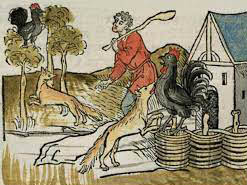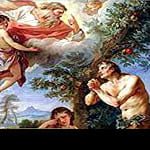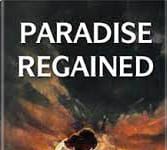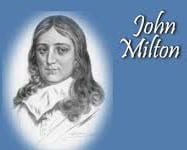Art of Narration in The Nuns Priests Tale
Art of Narration in The Nuns Priests Tale
Art of Narration in The Nuns Priests Tale
The term ‘art of narration’ refers to the characteristic manner (style) of expression or representation of the subject matter (theme) of any piece of literature. Chaucer set off his literary career with some inspiring novelty both in the outlook of theme and in the art of narration (style) by adding vigour, freshness and grandeur and thus inaugurated the golden path of modernism in literature. His art of narration is realistic, dramatic, philosophic, ironical, allegorical, and poetic full of miscellaneous references and allusions. Let us bring out these salient features of Chaucer’s art of narration in his ‘Nun’s Priest’s Tale’
First, Chaucer’s art of narration is realistic, exact and detailed. He describes his characters as if his eyes were wandering over a detail here and a detail there. He paints his men and women realistically as he found them. He gives detailed accounts of face patterns, bodily structures, voice, costume etc. as realistically as a photograph. For instance, his description of Chauntecleer’s beauty and bodily structure is highly realistic besides being poetic. He says
‘His comb was redder than the fun coral
And batailled as it were a castel wal
His byle was blak and as the jeet it shoon
Lyk asure were his legges and his toon
His nayles whiter than the lylye flour
And lyk the burned gold was his colour’
He notices the Nun’s Priest so minutely that enables him to say about him as:
‘See which braunes hath his gentil preest
So greet a nekke and swich a large breest.’
The above-quoted lines bear testimony of how keen he was in observing his men and women. In addition to these, his portrayal of the cock and hens are realistic. We see how Chauntecleer ignores Pertelote’s arguments regarding dreams and how Pertelote scolds him for being afraid of a dream – all are life-like.
Secondly, Chaucer is dramatic in his art of narration. ‘The Nun’s Priest’s Tale’ may be divided into several distinctive scenes – as an introduction (prologue), the scene of the household of the widow, the scene of Chauntecleer’s groaning and his description of the dream, the arguments in favour of dreams having significances, the appearance of the fox Russel and his flattery which leads Chauntecleer to be the victim of the fox, the chasing scene and the cock’s escape from the mouth of the fox and the conclusion which ends in morals. Thus the theme of the long poem rises up dramatically till Chauntecleer forgets his dreams and walks in a leisurely manner joyfully with the hens. After this, the chasing scene serves the purpose of denouement.
Besides this, the poet vivifies his description by putting the statements of his characters in their mouths. The very first line begins dramatically:
‘Hoo, quod the Knight, ‘goode sire, namoore of this!’
Along with those dramatic qualities the poet succeeds in arousing suspense in the tale as he gives a detailed account of the beast which he was afraid of. Thus the poet loiters a long in giving arguments in support of dreams having significance. Thus it is the dramatic quality that enhances the gusto of enjoying the story.
Thirdly, Chaucer’s art of narration is coloured by philosophical and psychological accounts of free will, simple necessity, conditional necessity, and Pertelote’s psychology towards her husband Chauntecleer. Allegorically Pertelote’s account of what a husband should be is the women’s psychology of human beings.
Fourthly, Chaucer’s art of narration is ironic. He is utterly ironic in portraying the widow. About her, the poet writes that she led a very simple and temperate life but her food items were something costly which bear two contradictory ideals, as
‘Ful sooty was hire bour and eek hire halle
In which she eet full many a sclendre meel’
After saying so, the poet says about her food items which is no way poor or scanty:
‘His bord was served most with whit and blak
Milk and broun bred in which foond no lak
Seyn bacon and sometime as eye or tweye
For she was as it were, maner, deye.’
Fifthly, Chaucer’s art of narration in ‘The Nun’s Priest Tale’ is allegorical. The conjugal relationship between Chauntecleer and Pertelote is allegorical which strikes us as soon as we go on reading the tale. Their relationship is ironic in the sense that Chauntecleer stands as a representative of all human husbands and Pertelote of all human wives. All husbands are indifferent, arrogant, and authoritative over their wives and so is Chauntecleer. He ignores every suggestion of Pertelote to get rid of the bad effect of his dream. On the other hand, Pertelote is very sincere and deep in love for which she becomes easily insolent and scolds Chauntecleer very badly as most human wives do.
The main tale about the fox and the cock serves an allegorical or metaphorical purpose. Besides its superficial meaning, we may derive its deeper or allegorical meaning. Superficially it is a story of a cock and a fox. But to think deeply it is the story of these two classes of human beings who represent those people who get easily induced by flattery and fall in peril. On the other hand, there is a class of people, (though shrewd) who are very proud and tender to lose their self-control for which they lose their desired thing.
Sixthly, Chaucer’s art of narration is poetic which is full of miscellaneous references and allusions. There are abundant uses of similes in the poem that not only gives felicity to its language but also render a force to its beauty. For example:
‘His vys was murier than the murie orgon
On massedayes that in the churche gon.
Besides the use of similes, there are some passages of fertile imagery. For example- the imagery of the chasing scene is noteworthy. Along with these, there are a lot of allusions and references from mythology, history, philosophy, legends etc. In support of dreams having their significance, Chauntecleer alludes to stories from Cicero and references to Kenelm, Macrobius, Joseph, Daniel, Croesus, Andromoacle etc.
In narrating the lamentation of the hens, after Chauntecleer was being seized off, the poet ransacks the pages of history and legends and gives a rich allusion to king Priam, Pyrrhus, Hasdrubal, Nero, and son on.
Thus from the above analysis of the poem we see that Chaucer’s art of narration is grand that has the capacity to grip the readers’ attention. And it is his art of narration that makes him a great poet in the English language. 0 0 0.
Art of Narration in The Nuns Priests Tale
You May Like:
- ‘Poetry is the Criticism of LIfe’ Mathew Arnold-An Explanation
- Contributions of S T Coleridge to the History of Literary Theory and Criticism
Art of Narration in The Nuns Priests Tale
N. B. The article ‘Chief Characteristics of Wordsworth’s Poetry’ originally belongs to the book entitled ‘Critical Essays on English Poetry‘ by Menonim Menonimus
Art of Narration in The Nuns Priests Tale
Books on Literary Criticism by M. Menonimus:
- World Short Story Criticism
- World Poetry Criticism
- World Drama Criticism
- World Novel Criticism
- World Essay Criticism
- Indian English Poetry Criticism
- Indian English Poets and Poetry Chief Features
- Emily Dickinson’s Poetry-A Thematic Study
- Walt Whitman’s Poetry-A Thematic Study
- Critical Essays on English Poetry
- Tawfiq al-Hakim’s Novel: Return of the Spirit-An Analytical Study
- Tawfiq al-Hakim’s Novel: ‘Yawmiyyat Naib Fil Arayaf’-An Analytical Study
- Analytical Studies of Some Arabic Short Stories
- A Brief History of Arabic Literature: Pre-Islamic Period (500 AD-622 AD)
- A Brief History of Arabic Literature: Early Islamic Period (622 AD-661 AD) …
Related Search:
- Chaucer’s Art of Narration in The Nuns Priests Tale
- The Nun’s Priest’s Tale
- Chaucer Nuns Priests Tale as a Beast Fable
- The Canterbury Tales
- The Art of Characterisation of Chaucer
- The Art of Characterisation in Chaucer’s Canterbury Tales











